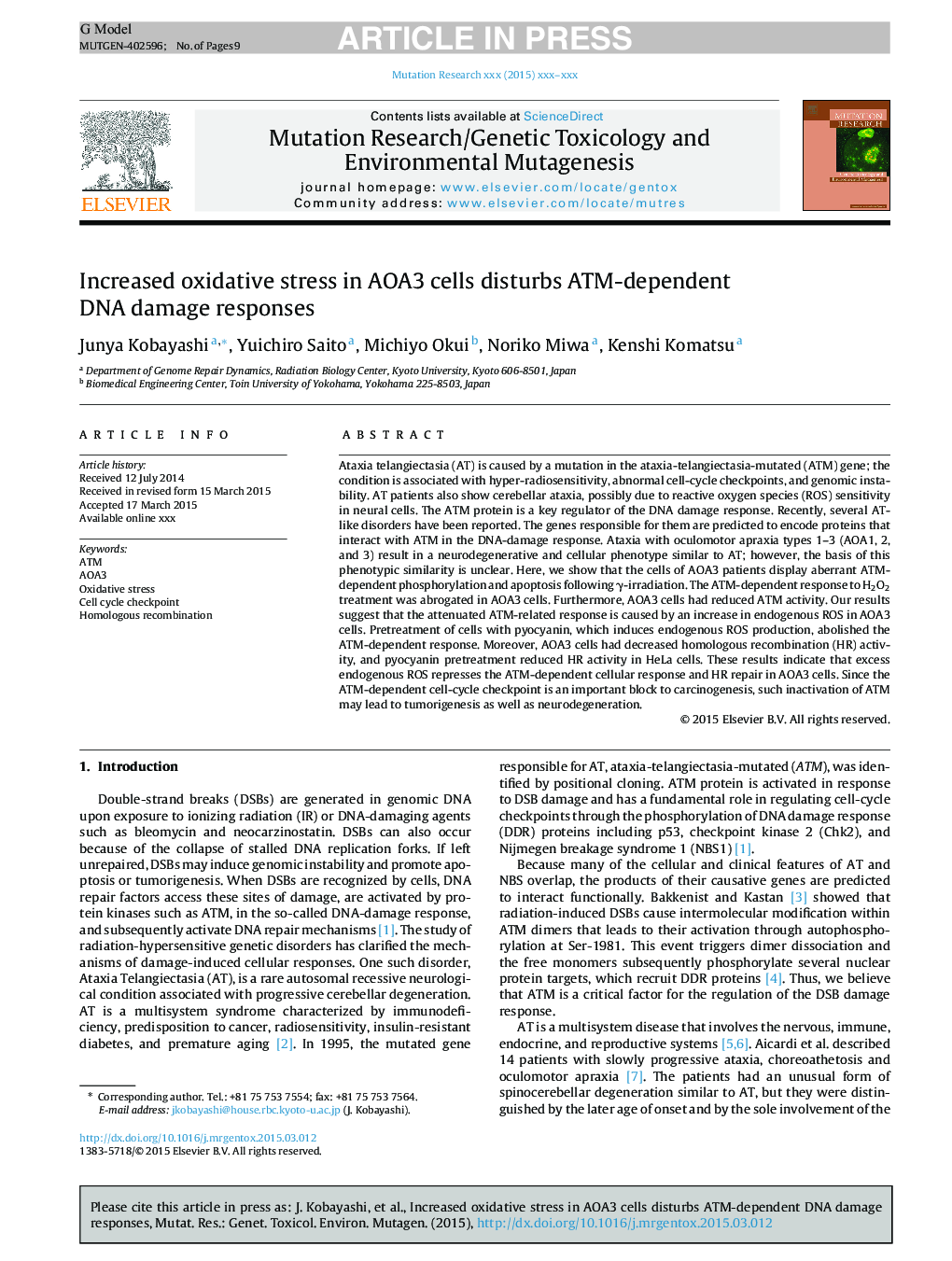| Article ID | Journal | Published Year | Pages | File Type |
|---|---|---|---|---|
| 8456400 | Mutation Research/Genetic Toxicology and Environmental Mutagenesis | 2015 | 9 Pages |
Abstract
Ataxia telangiectasia (AT) is caused by a mutation in the ataxia-telangiectasia-mutated (ATM) gene; the condition is associated with hyper-radiosensitivity, abnormal cell-cycle checkpoints, and genomic instability. AT patients also show cerebellar ataxia, possibly due to reactive oxygen species (ROS) sensitivity in neural cells. The ATM protein is a key regulator of the DNA damage response. Recently, several AT-like disorders have been reported. The genes responsible for them are predicted to encode proteins that interact with ATM in the DNA-damage response. Ataxia with oculomotor apraxia types 1-3 (AOA1, 2, and 3) result in a neurodegenerative and cellular phenotype similar to AT; however, the basis of this phenotypic similarity is unclear. Here, we show that the cells of AOA3 patients display aberrant ATM-dependent phosphorylation and apoptosis following γ-irradiation. The ATM-dependent response to H2O2 treatment was abrogated in AOA3 cells. Furthermore, AOA3 cells had reduced ATM activity. Our results suggest that the attenuated ATM-related response is caused by an increase in endogenous ROS in AOA3 cells. Pretreatment of cells with pyocyanin, which induces endogenous ROS production, abolished the ATM-dependent response. Moreover, AOA3 cells had decreased homologous recombination (HR) activity, and pyocyanin pretreatment reduced HR activity in HeLa cells. These results indicate that excess endogenous ROS represses the ATM-dependent cellular response and HR repair in AOA3 cells. Since the ATM-dependent cell-cycle checkpoint is an important block to carcinogenesis, such inactivation of ATM may lead to tumorigenesis as well as neurodegeneration.
Related Topics
Life Sciences
Biochemistry, Genetics and Molecular Biology
Cancer Research
Authors
Junya Kobayashi, Yuichiro Saito, Michiyo Okui, Noriko Miwa, Kenshi Komatsu,
